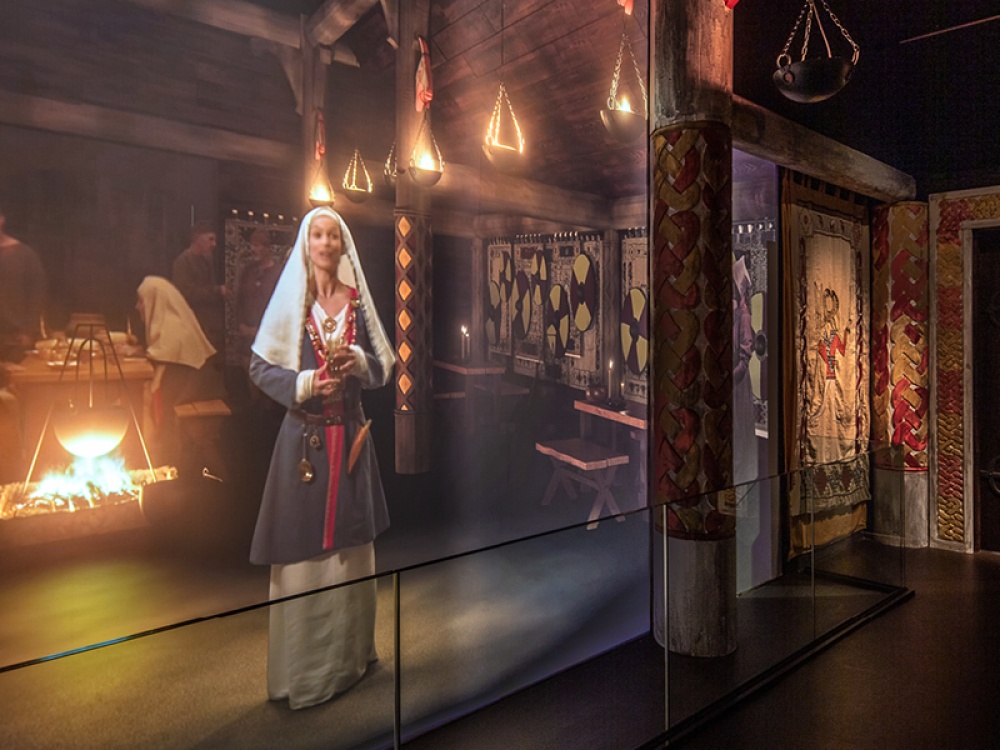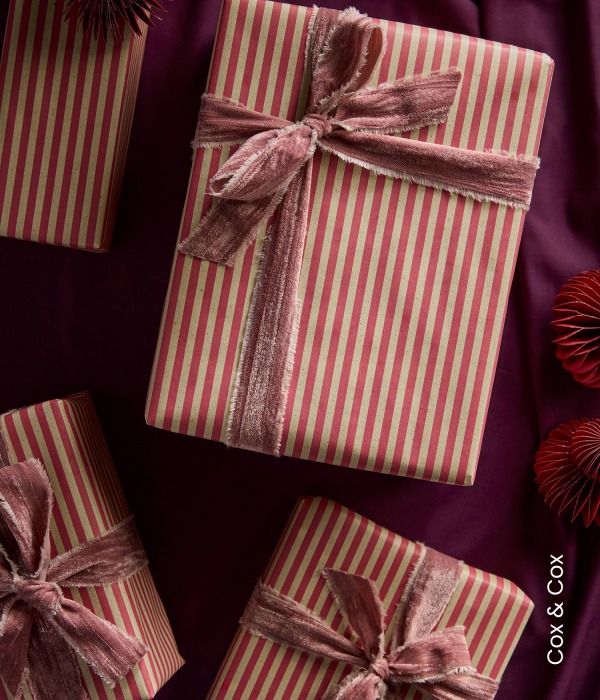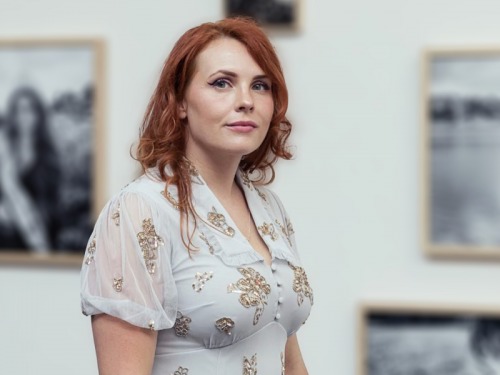Find Out How The Anglo-Saxons Celebrated Christmas

Today, we're used to a classic Dickensian Christmas with mulled wine and mince pies. But how did the Anglo-Saxons celebrate?
When we think of Christmas, the picture that comes to mind is one of celebration. Great food and drink shared with loved ones, gifts exchanged and songs sung throughout (whether they’re traditional carols or pop cult classics). But what was Christmas in Anglo-Saxon times like? How much did it differ from our gifts, canapés and carols?
‘All the traditions we have now hark back to Anglo-Saxon Yule,’ says Northumbrian archaeology scholar Chris Ferguson, who is also visitor experience director at Ad Gefrin, the museum and distillery in Wooler which celebrates the nearby Anglo-Saxon site of Yeavering. ‘We’re celebrating in the shortest days of the year.’
The Anglo-Saxon period of Yule originated from the Winter Solstice, the shortest day and longest night of the year. Now, our Winter solstice is on 21st December, but in Anglo-Saxon times, before the Gregorian calendar reform, the Winter solstice would’ve fallen on Christmas Day. ‘It was also kind of the New Year, so they had all the parties on one day to look forward to the year ahead. Everything in Yule leads up to this big feast,’ says Chris.

Yule began on 11th November and lasted all the way until 6th January, so not only would no-one criticise your choice to put the tree up and watch Elf a month early, there was also an extra feast to kick off the celebration. ‘Martinmas, on 11th November, is the feast of Saint Martin and marks the end of harvest and autumn and the start of Yule,’ explains Chris. ‘Up until this point, they’d have been getting all the crops in, harvesting the barley, rye and oats. Towards the start of November they’d bring all their cattle and sheep down from the hills for the winter. In effect, they harvested their cattle and slaughtered them. Some cuts of meat will be preserved and the ones which don’t preserve very well were used up on Martinmas.’
During the Yule period, the great halls would’ve been decorated, just as we decorate our own homes for the Christmas season now – minus the tinsel and baubles. ‘It was a lot of greenery and traditional Christmas evergreens like holly, ivy, mistletoe and yew. Yew is quite a mystical tree in Anglo-Saxon England – you’d find it in church yards, and pre-Christianity it was associated with the world tree (a colossal tree which supports the heavens in several mythologies). There would’ve also been herbs and berries to make it feel colourful and joyful.’
Thanks to its archaic nickname, the Dark Age, there’s a misconception that everything in the Anglo-Saxon era was dull. They actually loved colour. ‘It’s not like the Vikings, where there was fur everywhere. They’re all wearing fine linens and silk and everything's really bright. Yule would’ve been a really colourful time. It would’ve been all natural dyes that they would’ve grown, and they would’ve gathered shells by the shore to grind up. Everything they could make a dye out of, they would, and the bright colours would indicate their status as well.’
Everything we know about the structure of Anglo-Saxon Christmas day we know from both Saint Bede (who lived at Jarrow and Wearmouth and wrote about Yule in his book, the Ecclesiastical History of the English People) and Beowulf, the Old English epic poem. ‘Beowulf would be performed in the great hall as everyone was feasting, and it describes feasting scenes because that’s what people knew, it was familiar. The great hall, somewhere like Yeavering, is where they’d gather and have the big feast. There’d be gift giving, music and performers. There’d also be toasts, boasting, oath making and flyting, [which was] a bit like an Anglo-Saxon rap battle. They’d do back and forth with rhyming and put-downs. It’s a joyful feast, everyone’s having a good time.’
On an Anglo-Saxon Christmas lunch, there was no turkey, as they weren’t imported to England from North America until the 16th century. ‘There’s pork, beef, cattle, ox, more that sort of thing,’ says Chris. ‘On Christmas, they’d have the amazing cut of beef or piece of pork that had been drying in the rafters [since harvest].’ There was no mulled wine or eggnog either, though according to Chris, they would’ve been very drunk. ‘They’d be drinking a lot of beer, mead and wine,’ he explains. ‘They made a lot of beer as it was also a way of making water safe to drink. They had a lot of wheat beers, similar to what we’d now think of as low-alcohol percentage table beers, but it was safer to drink that than just water.’
The lavish feast wasn’t just an occasion for the upper-classes, but rather an open invite for all to unite. ‘In Anglo-Saxon society the great halls were places where people came together. Yes, the great hall was the palace of the king and queen, but you would’ve had everyone there, gathered together in the community for these feasts. It’s like now, how you’d have everyone over to your house, because they’re one big family in that way, and it was a big party,’ says Chris.
Gift giving was an important tradition at Yule. Gifting is linked to Epiphany, on 6th January, rather than Christmas Day itself, as this was the day when the three biblical magi, known as the Three Wise Men, presented the newborn Jesus Christ with gifts of gold, frankincense and myrrh. The story is depicted on the side of the Northumbrian Anglo-Saxon artefact Frank’s Casket. ‘It would be a thing of power, too,’ says Chris. ‘If the King or Queen gave you their cup, something to eat, or a gift, it would be a symbol of your power and status.’

The Yule log also played a key role in the celebrations. But rather than referring to a delicious, thickly iced chocolate cake, the Anglo-Saxon tradition was an actual log, set on fire and burned. ‘It’s all about the light and the darkness,’ explains Chris. ‘Because it’s the shortest day, they’re celebrating with light and it’s all connected to Christ. He is the light and the darkness from a religious point of view – he’s bringing the light of God and the light of the world into the darkness, which represents what people don’t understand. Lighting the Yule log and keeping it burning is an ancient Germanic tradition that’s pre-Christian, but became a Christian thing.
‘How long it was kept burning would depend on tradition and where they were from,’ Chris continues. ‘In some places, it would be all day and night on Christmas itself, other places it would be the entire period from Christmas to Epiphany, where they’d get a great big log that took a long time to burn or they’d keep replenishing the log.’
After Yule, the darkest days of winter were over and it was time to look to the light. ‘When they come out of it, they make a whole load of cakes to use everything up. They’ve got their seeds and their honey, but they’ve eaten everything else, so February was cake month. What we now think of as Lent, they did that then too as they’d run out of food anyway so they may as well fast.’
It seems Anglo-Saxon Yule, then, with it’s feasting and merriment, is not so different from our Christmas season after all.
Chris is visitor experience director at Ad Gefrin, Northumberland’s Anglo-Saxon museum and distillery. This winter, they’ll be celebrating Yule with a programme of events which includes embroidery, decorating and wreath-making workshops, storytelling, live music and a special Yuletide menu at their bistro. Go to adgefrin.co.uk to find out more.










